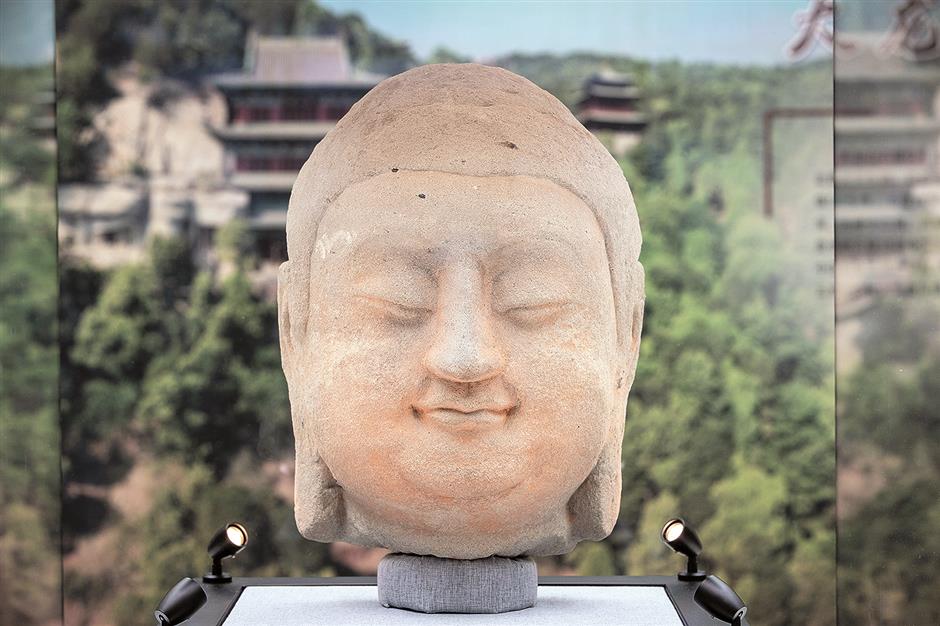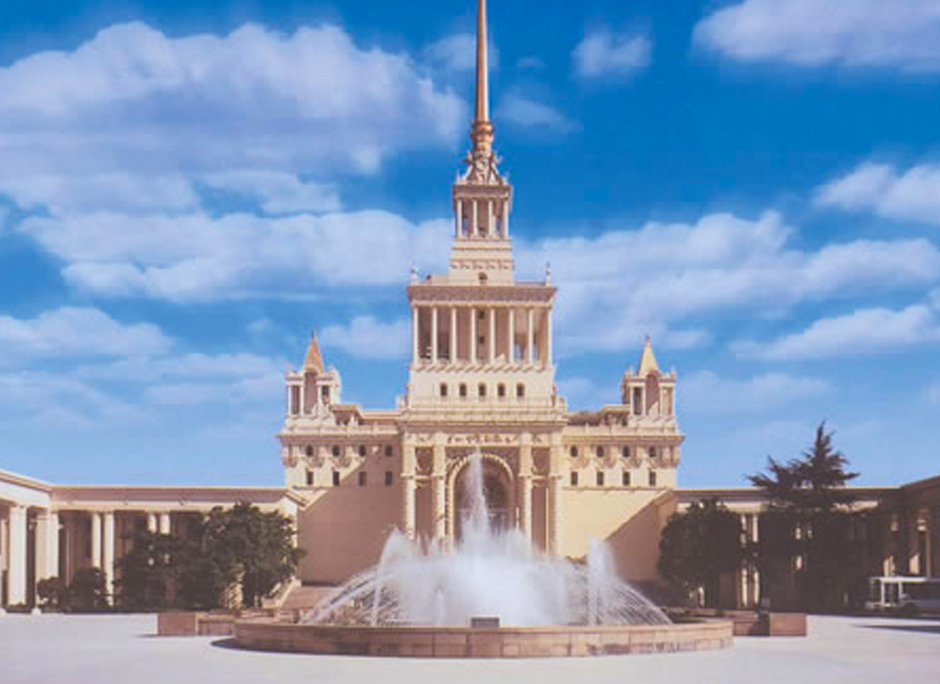Stolen Buddha statue comes home to China

Almost a century after it was stolen, a stone Buddha head statue from the Tianlongshan Grottoes returned to its home in Taiyuan, Shanxi Province, at the end of July.
Almost a century after it was stolen, a stone Buddha head statue from the Tianlongshan Grottoes (Tianlong Mountain Grottoes) returned to its home in Taiyuan, Shanxi Province, at the end of July.
Tianlongshan Grottoes are situated on the cliffs of the east and west peaks of Tianlong Mountain, named after the temple built at the foot of the mountain during the Northern Qi Dynasty (AD 550-577).
It was once a summer palace for Emperor Wenxuan of the Northern Qi Dynasty.
There are 24 grottoes spanning from the Eastern Wei Dynasty (AD 534-550) to the Northern Qi Dynasty, the Sui Dynasty (AD 581-618) and the Tang Dynasty (AD 618-907).
The earliest excavator of the grottoes was Gao Huan, the paramount general and minister of the Eastern Wei Dynasty.
The grottoes house more than 1,500 Buddha statues and 1,144 art forms, such as relief and caisson ceiling painting. Caisson ceiling is a distinctive architectural feature of temples and palaces in ancient China.
Dating back to the Sui Dynasty, the recovered statue was originally set on the northern wall in the No.8 cave, the largest one in the grottoes.
Built in AD 584, the cave is the only one with a specific date of construction and the only central pillar cave in the site.
Featuring a round face, arched eyebrows, slightly closed eyes, pursed lips, a flat bun, long earlobes and a subtle smile, the statue has typical artistic characteristics of the late Northern Dynasty (AD 486-581) and early Sui Dynasty.
It is 33.7 centimeters long, 30.4 centimeters wide and 44.5 centimeters tall. Weighing 55.5 kilograms, the statue is made primarily of quartz and calcite, two prominent minerals in the mountain's rocks.
Experts speculate the Buddha head was originally colored, as traces of paint have been found on its top and ears.
Moreover, organic materials have been detected on its nose, leading experts to believe the nose was once restored.
Tianlong Mountain was the most heavily looted Chinese Buddhist grotto site by foreigners in modern times.
Its previous splendor was captured in a series of old photos shot by someone from Japan during 1912 to 1949.
Unfortunately, because of the photos, the treasure house of archeological relics was widely known to many foreign explorers who ransacked it in the 1920s.
Almost all the heads and bodies of the Buddha statues were destroyed.
More than 240 were stolen and lost overseas through a Japanese antique dealing agency.
Most of them are in museums or private collections in Japan, Europe and North America.
The Buddha head statue is the first cultural relic stolen from the grottoes that has been returned from Japan.
Last September, the National Cultural Heritage Administration heard a Chinese Buddha head statue from the Tang Dynasty would be auctioned at the Toei International Auction in Tokyo. After careful analysis, experts believed it was stolen from Tianlonghsan Grottoes.
The administration quickly set about repatriating the cultural relic.
On October 15, it contacted the auction house and requested a cancellation of the statue's auction.
Zhang Rong, board chairman of the auction house and a native of Hangzhou, Zhejiang Province, quickly agreed to cancel it.
After negotiations, Zhang bought the statue from its local holder and donated it to the Chinese government. Zhang was later named an honorary citizen of Taiyuan.
The statue safely arrived in Beijing on December 12.
A show based on the story was performed at this year's Spring Festival Gala. The statue was displayed at the Beijing Lu Xun Museum in February and March before returning home to Taiyuan in July.
To welcome its return, a special exhibition has been held at the Tianlongshan Grottoes Museum in Taiyuan. Instead of being positioned in the original cave, the statue is displayed in the museum to minimize erosion.
To provide visitors with an immersive experience, the museum is rebuilding the No.8 cave back to its original size.
